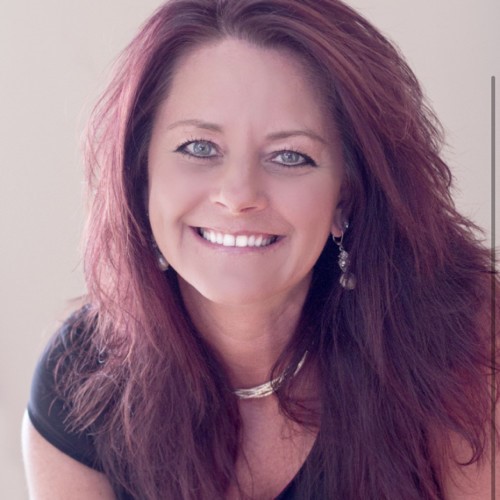A new house in the Bahamas is built with an alternative concrete that sucks CO2 out of the air. It’s a home that’s supposed to help in the fight against climate change, and the plan is to build 999 more like it.
That’s the slam dunk NBA Lakers legend-turned-actor Rick Fox is working toward now on the small island nation where he grew up. Fox is the CEO and co-founder of the sustainable building materials startup Partanna that unveiled its first home today. If they’re successful in the Bahamas, the goal is to make its alternative concrete an everyday building material that could cut down pollution from construction.
“I shut down my entire career that was in Hollywood to pursue and create [climate] solutions,” Fox tells The Verge. “I had to move around the industry that was new to me and meet people that were looking at me like, ‘What the hell are you doing in concrete?’”
“What the hell are you doing in concrete?”
Concrete just happens to be a major source of the greenhouse gas emissions causing more intense storms, wildfires, and other catastrophes through climate change. The culprit is actually cement, a key ingredient in concrete that alone is responsible for more than 8 percent of carbon dioxide emissions globally.
“My entry into the world of concrete was one out of just sheer survival and the need to innovate in my own home country,” Fox says. Hurricane Dorian struck the Bahamas in 2019, wrecking 75 percent of homes on the worst hit island of Abaco and displacing thousands of people. Fox was in Los Angeles at the time. “The closest thing I could do was race to CNN to scream from the rooftops that we needed to do something better,” he says.
Soon after, he met California-based architect Sam Marshall, whose home had sustained damage in the 2018 Woolsey fire, one of the most destructive blazes in the state’s history. Marshall had already “caught lightning in a bottle,” according to Fox. Working with material scientists, they’d developed a way to make concrete without using carbon-intensive cement. Together, they co-founded Partanna.
The pair are pretty tight-lipped around the process, but the main ingredients are brine from desalination plants and a byproduct of steel production called slag. By getting rid of cement as an ingredient, Partanna can avoid the carbon dioxide emissions that come with it. Making cement produces a lot of climate pollution because it has to be heated to high temperatures in a kiln and because it triggers a chemical reaction that releases additional CO2 from limestone.
Partanna says its mixture can cure at ambient temperatures, so it doesn’t have to use as much energy. It also says binder ingredients in the mixture absorb CO2 from the air and trap it in the material. In a home or building, the material continues to pull in CO2. Even if that structure is demolished, the material holds onto the CO2 and can be reused as an aggregate to make more of the alternative concrete.
That’s how the startup and can call its material and the newly constructed home “carbon negative.” The 1,250-square-foot structure is supposed to have captured as much CO2 as 5,200 mature trees a year.
To be sure, carbon-counting with trees is tricky. A Guardian investigation earlier this year found that 90 percent of rainforest offsets certified by one of the world’s leading carbon credit certifiers, Verra, are “worthless” because they likely didn’t lead to actual reductions in pollution. Verra is also certifying carbon credits for Partanna. Fox says the CO2 Partanna captures is easier to quantify than forest offsets and isn’t as vulnerable as forests that need to be protected from deforestation in order to store carbon.
It’s also worth noting that Partanna’s key ingredients, slag and brine, come from energy-intensive steel and desalination facilities that can produce a lot of CO2 emissions on their own. Partanna isn’t counting those emissions in its carbon footprint. “That’s not on us … These are waste materials that we are taking and using for good,” Fox says.
“It’s good that they’re making use of waste,” says Dwarak Ravikumar, an assistant professor at the School of Sustainable Engineering and the Built Environment at Arizona State University. Even so, Ravikumar says, “We need to conduct a robust analysis of this from a systems perspective to understand what is the overall climate impact.” It’s important for the company to share its data so that researchers can assess Partanna’s entire environmental footprint and how scalable its strategy is, he says.
“We are not just on the frontline of climate change; we are the frontline of solutions.”
Fox isn’t the only one on a mission to make a more sustainable building material than traditional concrete. Microsoft announced last month that it’s testing low-carbon concrete for its data centers. And other startups are working to take CO2 out of the atmosphere and trap it in concrete.
Partanna says it has an edge since its material is made with brine. It’s actually supposed to get stronger with exposure to seawater — an attractive trait to a country made up of many low-lying islands exposed to worsening storms and sea level rise.
“We are not just on the frontline of climate change; we are the frontline of solutions,” Philip Davis, prime minister and minister of finance of the Bahamas, said in a Partanna press release.
The Bahamian government is partnering with Partanna to build 1,000 homes, starting with a community of 29 more houses that are supposed to be built by next year. No one is living in the first one in Nassau yet; it’s a prototype. But the next are expected to be part of a program to help first-time homeowners.


/cdn.vox-cdn.com/uploads/chorus_asset/file/25001154/RA23101115192003323.jpg)








